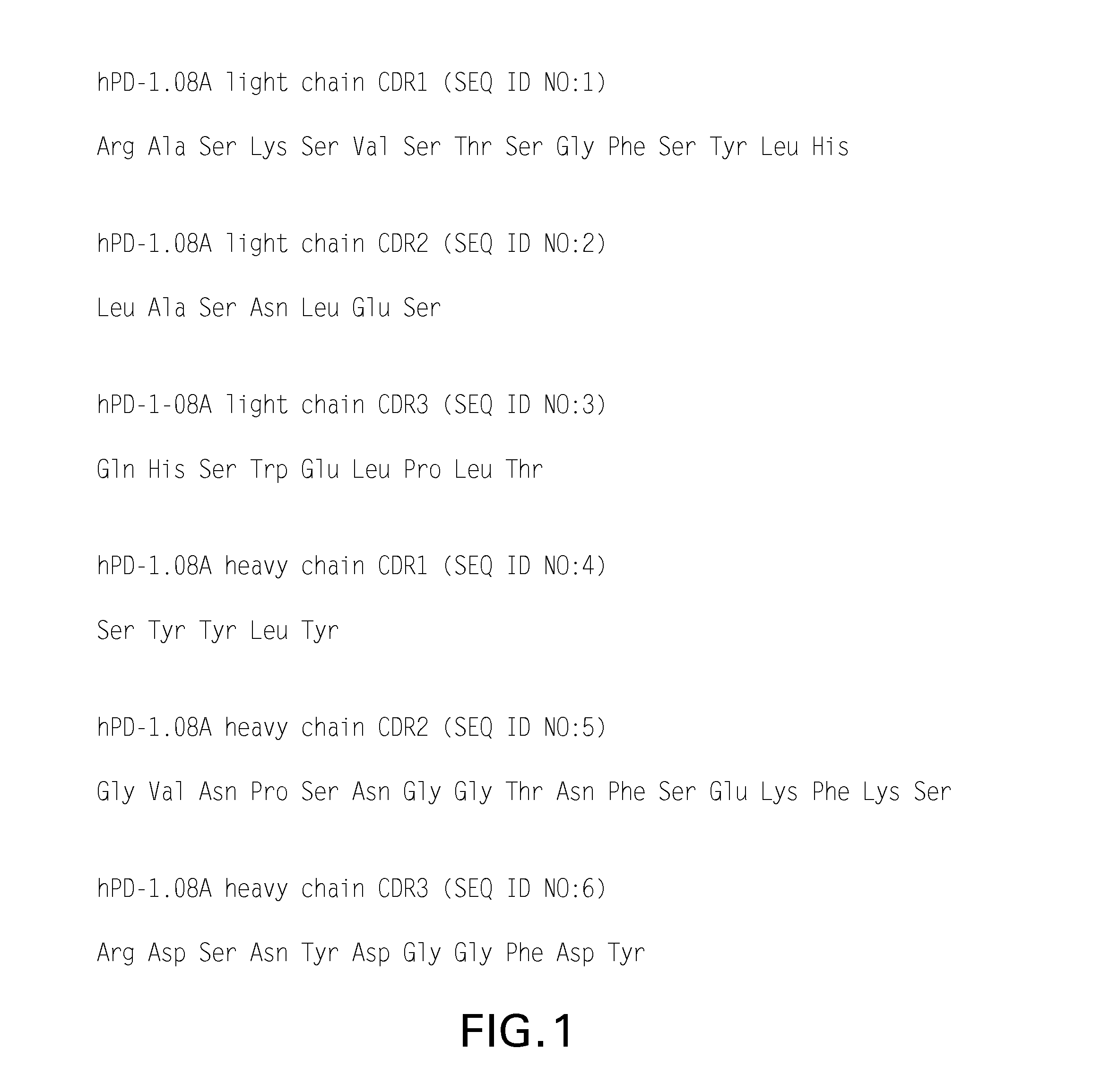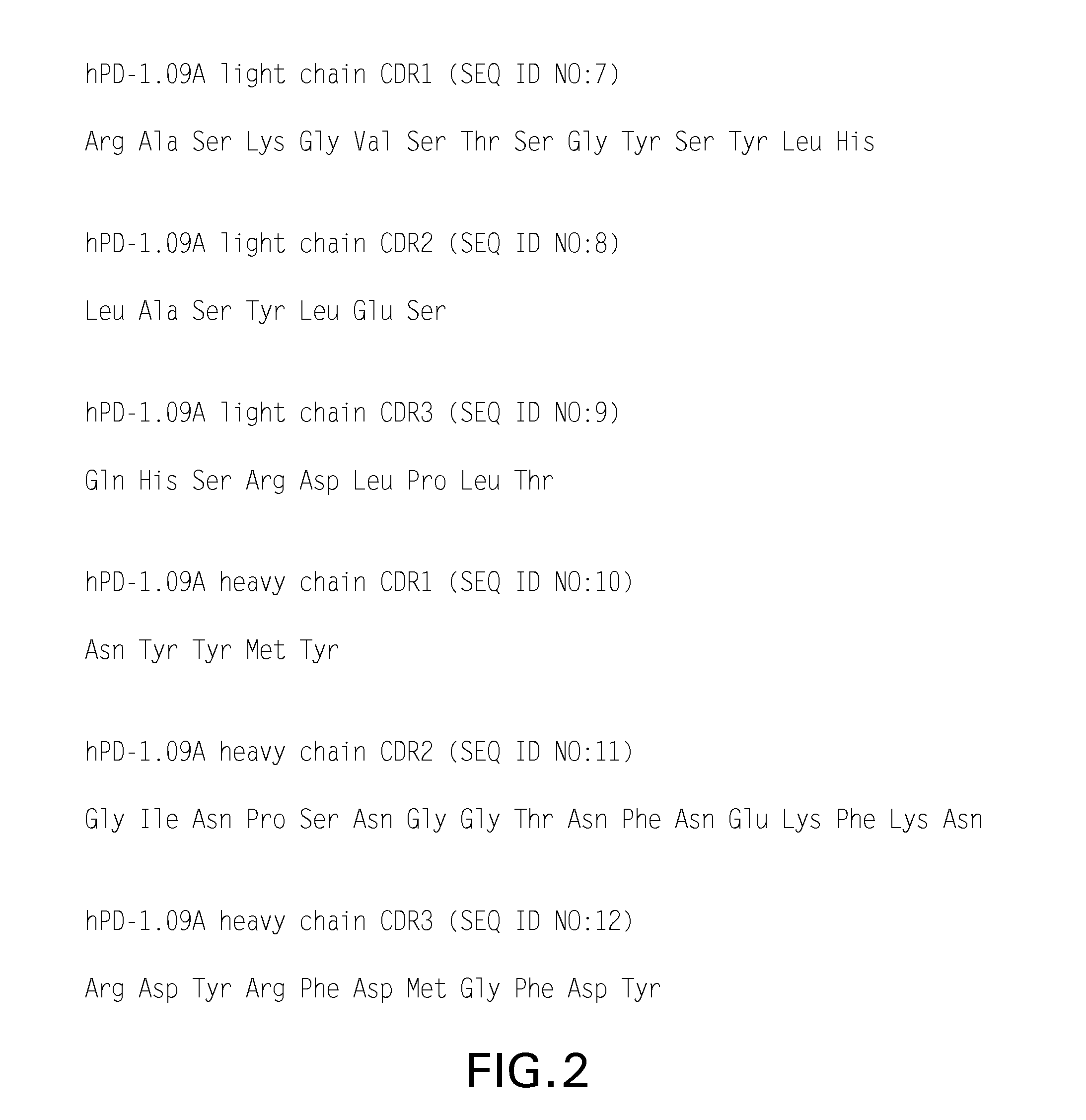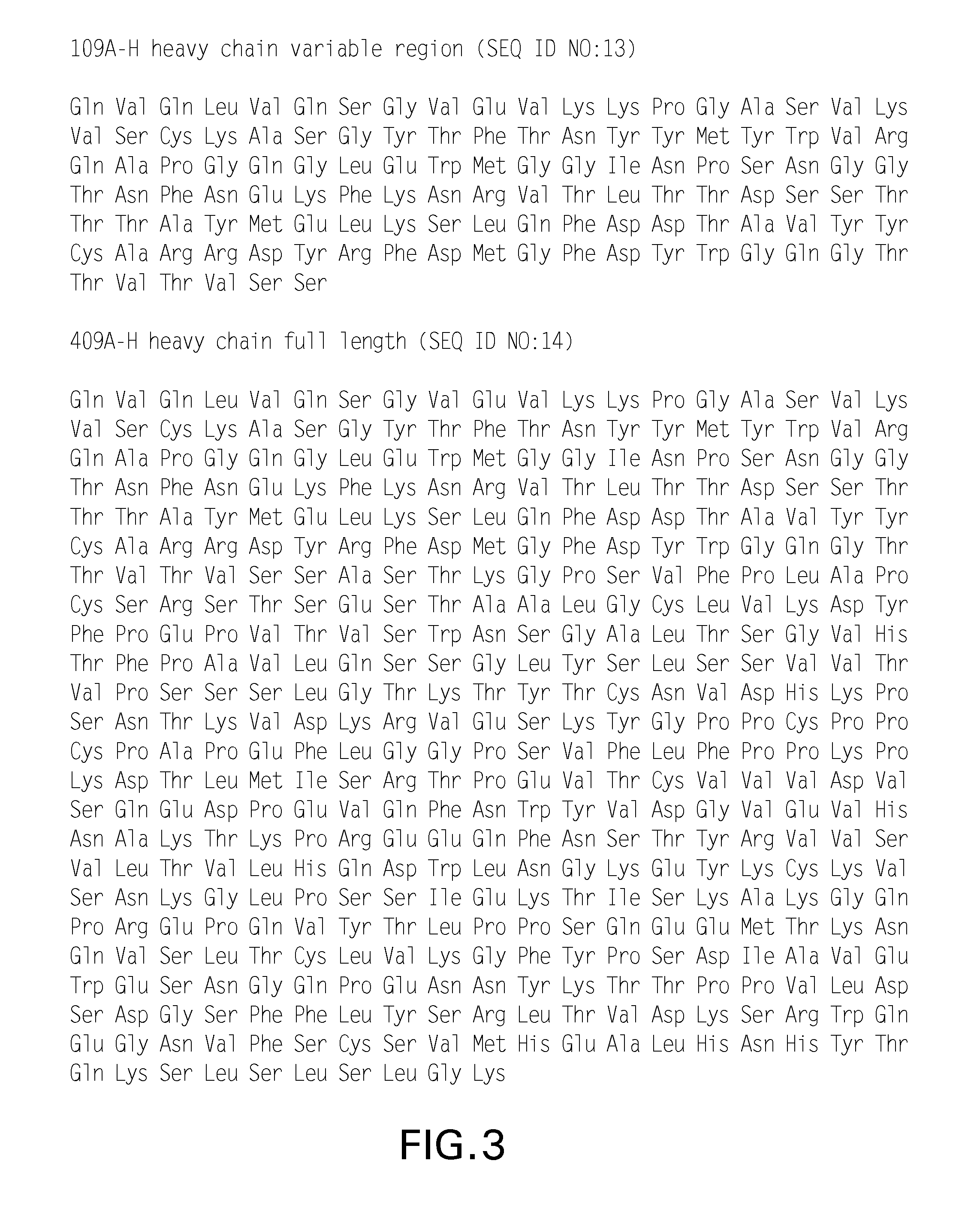Gene signature biomarkers of tumor response to pd-1 antagonists
a pd-1 antagonist and tumor gene technology, applied in the field of cancer treatment, can solve the problems of significant number of patients not showing an anti-tumor response, and achieve the effect of higher and lower expression levels
- Summary
- Abstract
- Description
- Claims
- Application Information
AI Technical Summary
Benefits of technology
Problems solved by technology
Method used
Image
Examples
embodiment 23
24. The method, composition, drug product or kit of embodiment 23, wherein the tumor is metastatic melanoma, the gene signature is Up Gene Signature 1, the set of normalization genes consists essentially of the 400 genes in Table 5 and the reference score is about 2.310.
25. The method, composition, drug product or kit of embodiment 23, wherein the tumor is metastatic melanoma, the gene signature is Up&Down Gene Signature 1, the set of normalization genes consists essentially of the 400 genes in Table 5 and the reference score is about 0.060.
26. The method, composition, drug product or kit of any of the above embodiments, wherein the PD-1 antagonist is a monoclonal antibody, or an antigen binding fragment thereof, which specifically binds to PD-1 or to PD-L1 and blocks the binding of PD-L1 to PD-1.
embodiment 26
27. The method, composition, drug product or kit of embodiment 26, wherein the PD-1 antagonist is an anti-PD-1 monoclonal antibody which comprises a heavy chain and a light chain, wherein the heavy and light chains comprise SEQ ID NO:21 and SEQ ID NO:22.
28. The method, composition, drug product or kit of any of embodiments 1 to 25, wherein the PD-1 antagonist is MPDL3280A, BMS-936559, MEDI4736, MSB0010718C or a monoclonal antibody which comprises the heavy chain and light chain variable regions of SEQ ID NO:24 and SEQ ID NO:21, respectively, of WO2013 / 019906.
29. The method, composition, drug product or kit of embodiment 26, wherein the monoclonal antibody, or antigen binding fragment thereof, comprises: (a) light chain CDRs of SEQ ID NOs: 1, 2 and 3 and heavy chain CDRs of SEQ ID NOs: 4, 5 and 6; or (b) light chain CDRs of SEQ ID NOs: 7, 8 and 9 and heavy chain CDRs of SEQ ID NOs: 10, 11 and 12.
31. The method, composition, drug product or kit of embodiment 26, wherein the PD-1 antag...
example 1
Preparation of FFPE Whole Cell Lysates and Subsequent Gene Expression Analysis Using the NanoString nCounter™System
[0219]This example describes the methods used to analyze gene expression in the FFPE tumor samples discussed in the Examples below. Whole cell lysates were prepared from slides of FFPE tissue for analysis on the NanoString nCounter™ gene expression platform (NanoString Technologies, Seattle, Wash.). Prior to making the cell lysate, each tissue section was deparaffinized in xylene for 3×5 min and then rehydrated by immersing consecutively in 100% ethanol for 2×2 min, 95% ethanol for 2 min, 70% ethanol for 2 min and then immersed in dH2O until ready to be processed. Tissue was lysed on the slide by adding 10-50 ul of PKD buffer (Qiagen catalog #73504). Tissue was scraped from the slide and transferred to a 1.5 ml eppendorf tube. Proteinase K (Qiagen catalog #73504) was added at no more than 10% final volume and the RNA lysate was incubated for 15 min at 55° C. and then 15...
PUM
| Property | Measurement | Unit |
|---|---|---|
| Fraction | aaaaa | aaaaa |
| Current | aaaaa | aaaaa |
Abstract
Description
Claims
Application Information
 Login to View More
Login to View More - R&D
- Intellectual Property
- Life Sciences
- Materials
- Tech Scout
- Unparalleled Data Quality
- Higher Quality Content
- 60% Fewer Hallucinations
Browse by: Latest US Patents, China's latest patents, Technical Efficacy Thesaurus, Application Domain, Technology Topic, Popular Technical Reports.
© 2025 PatSnap. All rights reserved.Legal|Privacy policy|Modern Slavery Act Transparency Statement|Sitemap|About US| Contact US: help@patsnap.com



